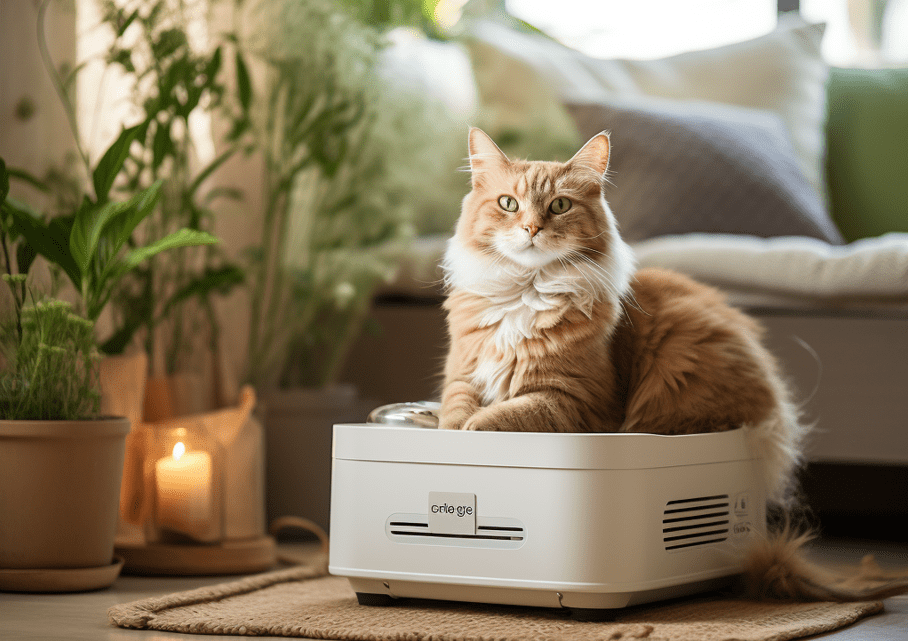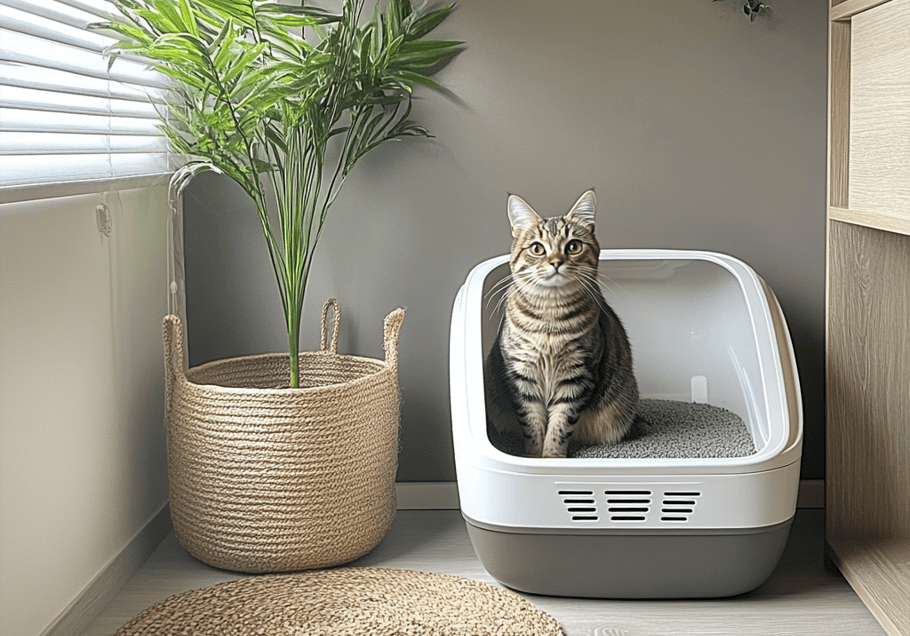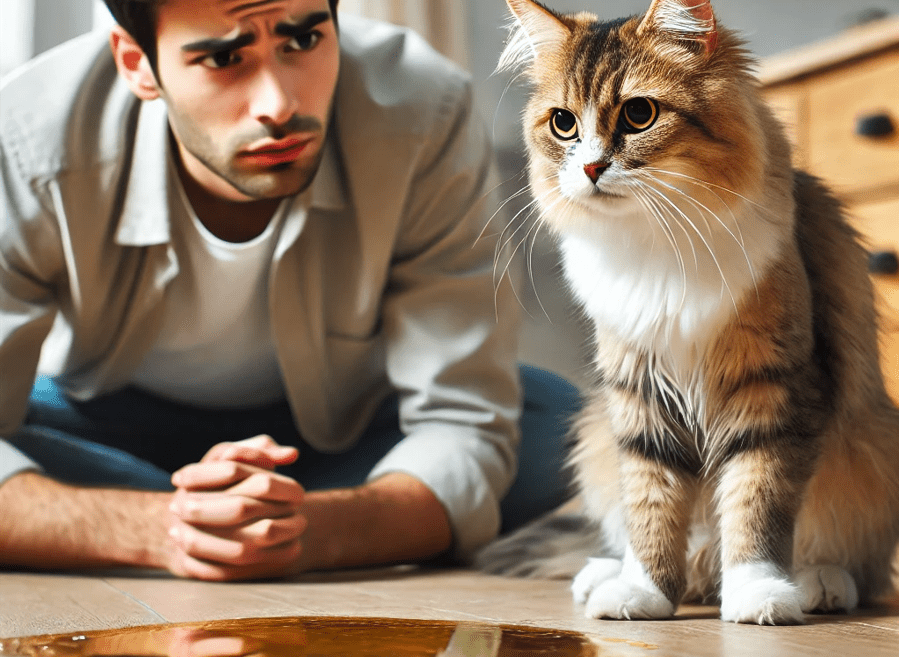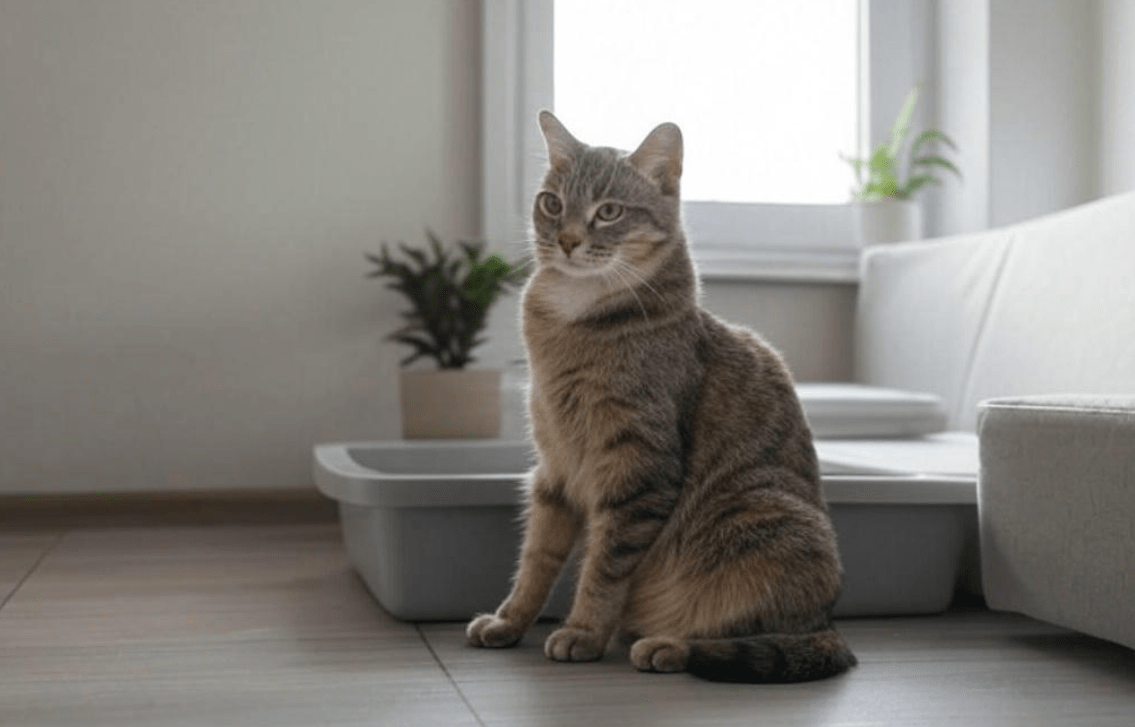
Taking care of a cat litter box demands specific tasks that need to be handled. Professionals call placing the litter box in its ideal spot as one of the top ways to manage this feature. Your cat’s use of the litter box depends strongly on where you place it so prevent unwanted accidents outside the box. Knowing where to place the litter box to avoid accidents is essential for both the well-being of your cat and the cleanliness of your home.
This article will explain the right and wrong choices for litter box placement plus show you how to stop accidents while making your cat happy. This guide explains where to put the litter box right and addresses typical mistakes with feline litter box habits plus fixes any problems you may have.
What You’ll Learn:
1.The selection of a proper litter box position helps your cat develop better bathroom habits.
2.Follow these rules when you select the right location for your litter box system.
3.Many owners make basic errors when setting the litter box for their pet.
4.Discover expert solutions to avoid misuses and address litter box problems.
5.By recognising what your cat prefers help you find better locations for the litter box.
Discover how the location of your litter box affects your cat’s bathroom preferences.
Why the Location of the Litter Box Matters
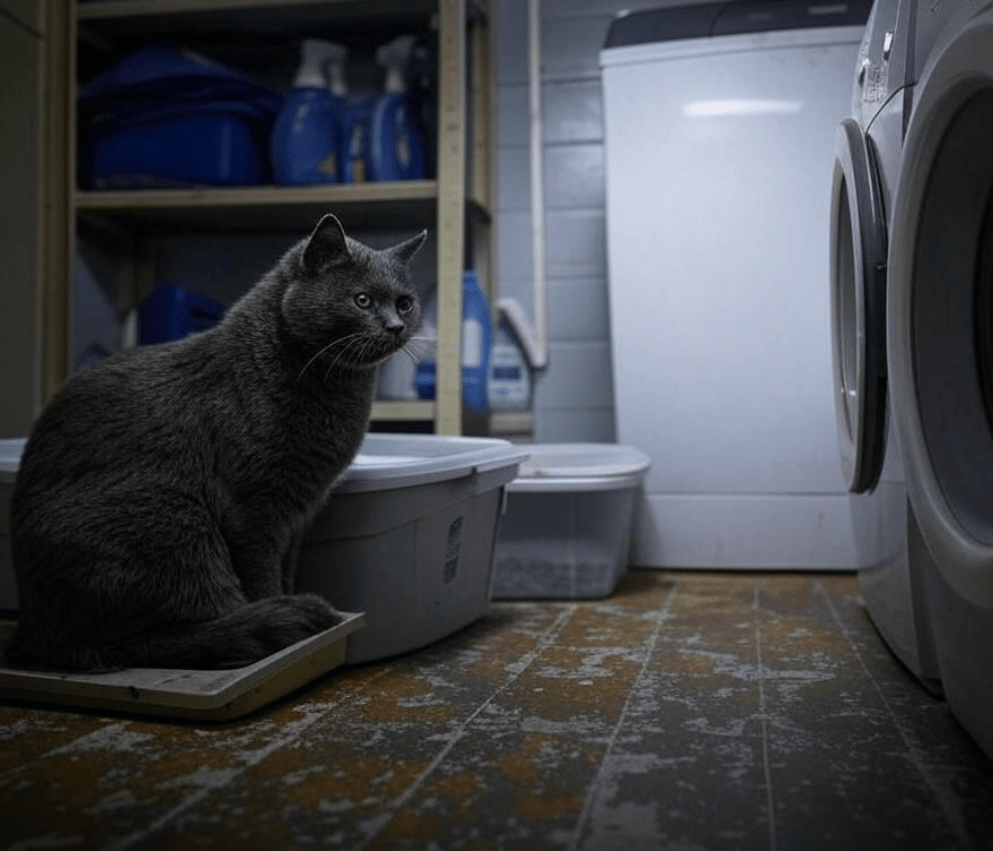
Placing your litter box in a suitable area affects how comfortable your cat feels while having privacy during bathroom time. Cats want a familiar environment to use their bathroom without feeling anxious or threatened. If your cat faces stress or noise while trying to use a litter box placed in an inconvenient spot they will either create bad habits or totally stop using it which leads to house accidents.
A cat who cannot or will not use an incorrectly placed litter box may hold urine or stool that leads to urinary tract infections (UTIs) or constipation. The correct position for the litter box affects more than it just being a convenient access for your cat; it ensures their overall health.
Dos of Litter Box Placement
In the following section we will cover practical steps to position the litter box properly and keep your home clean and safe for your pet.
Place the Litter Box in a Quiet, Low-Traffic Area

The level of foot activity near the litter box directly affects how well your cat uses it. By nature cats like to have a peaceful spot for their private bathroom activities. Keep the litter box out of pathways that remain busy throughout the day such as the main entry, next to the kitchen, or in passageways. The presence of heavy foot traffic around the litter box makes your cat feel tense or unsatisfied which leads them to ignore using it.
Ensure Easy Accessibility
Accessibility is key. Your cat should reach the litter box without physical strain. Your cat will not want to go near a high-up container. Examine your cat’s health condition together with their size and age to choose the right spot to place the litter box. Cats with ageing issues or joint pains should use a lower or less challenging position for their litter box. Place the litter box on the floor at a spot your cat can reach with no effort.
Provide Multiple Litter Boxes
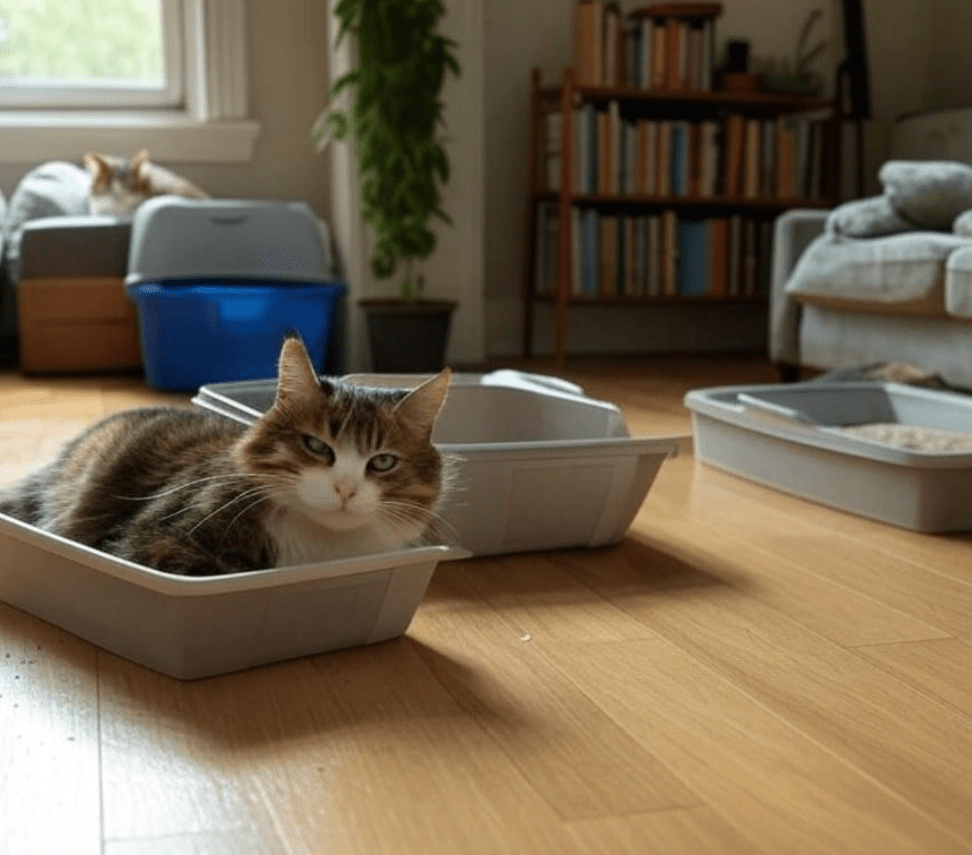
Have many cats? You should put one litter box for each pet plus one more even when you have a large living space. Each cat requires one litter box with an additional one for convenience. Setting multiple accessible litter boxes helps all your cats use it while preventing fighting between them for the same box. Spread multiple litter boxes throughout the different areas of your house.
Choose a Location That Is Away from Food and Water
Cats naturally want to avoid mixing bathroom space with their eating and drinking areas. Your cat will feel attracted to use the litter box when you place it far away from his food and water dishes. Putting the food area apart from the waste box lets your cat stay sanitary and stop linking these two essential needs.
Consider Your Cat’s Privacy
Privacy matters to most cats during their litter box activities. They need hiding spots when they use the bathroom. If no spots are available they avoid using this area. Instal the litter box in a quiet corner space or inside a spacious bathroom with a door to help anxious cats feel safer while using the restroom. Providing privacy in the litter box area creates a secure atmosphere that helps your cat maintain their normal toileting habit.
Keep the Litter Box Clean
Constant sanitization of the litter box helps your cat continue using the designated area for bathroom needs. Your cat will look for different areas to urinate when the litter box has obvious dirt or excessive amounts of waste. Properly cleaned litter boxes build a more comfortable experience for your cat and decrease the chance of house soiling. Scrape the waste daily and perform a deep cleaning with soap and water once weekly to ensure your cat uses the litter box and to avoid unpleasant smells.
Don’ts of Litter Box Placement
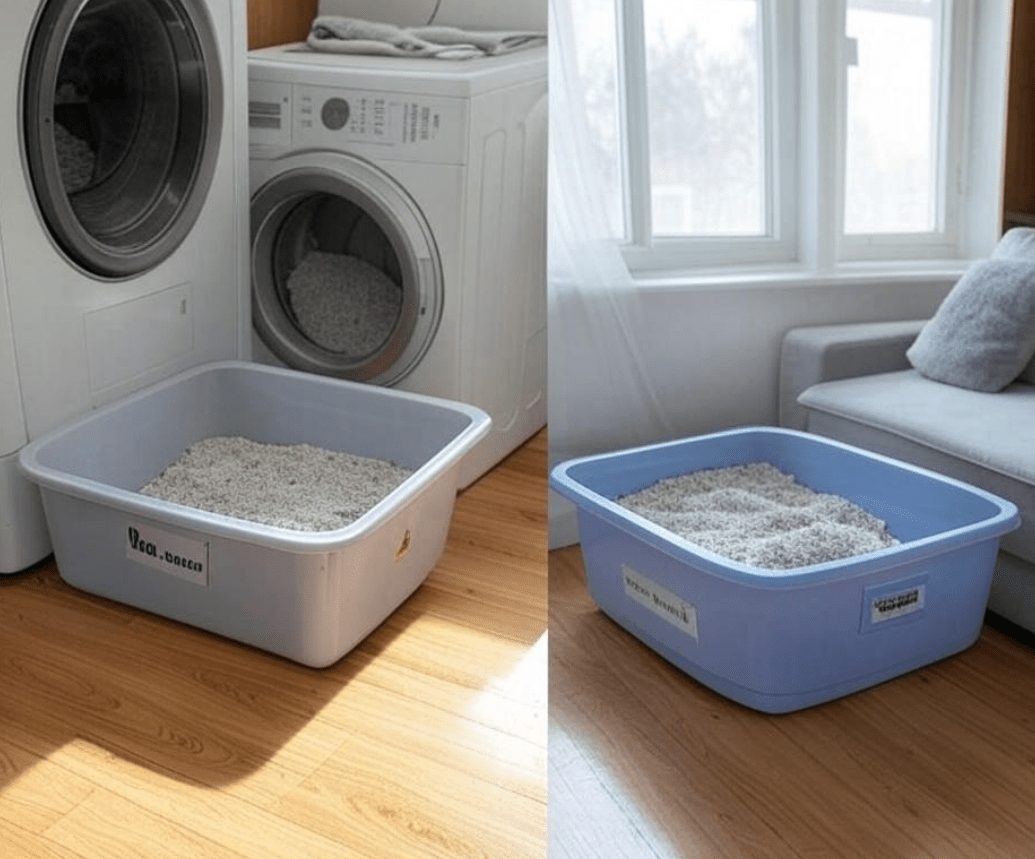
Positioning the litter box well will help but preventing specific locations also guards your cat’s health.
Don’t Place the Litter Box in a High-Traffic Area
Cats seek undisturbed space when doing their business. Placing the litter box along busy pathways through rooms with background appliance sounds creates unsafe environments for your cat. The presence of someone watching while using the box makes cats less likely to use it. Select a calm private corner for your cat to use without feeling threatened.
Avoid Placing the Box Near Loud Noises or Disturbances
Loud household machines like washers and dryers stress out cats which makes them unwilling to use their litter box when placed nearby. A scary sound close to the box might prevent your cat from using it since they will feel anxious. Select a spot for the litter box that has little or no disruptive background noise because your cat needs a peaceful environment to relax.
Don’t Place the Box in a Hard-to-Reach Area
Hiding the litter box in distant spaces will make it hard for your cat to use it properly. Setting up the box at hard-to-access areas like narrow spaces or back of furniture reduces the chances for your cat to use the facility. When a cat needs to travel past obstacles to reach the litter box they will choose to stay away which creates bathroom problems in other places.
Don’t Place the Box in Areas with Strong Odors
Putting the litter box near trash bins or cleaning supplies threatens its use because cats dislike strong odours. Cats sense odours well and will not use their litter box if it sits next to strong unpleasant smells. Select a location with light odours and maintain proper cleanliness to reduce unpleasant smells that might deter your cat.
Avoid Placing the Box in a Location Without Ventilation
Good airflow needs to surround the litter box area. Cats will be less willing to use a litter box when they locate it in an enclosed space without proper ventilation because foul smells build up quickly. Set the litter box where fresh air flows through for a comfortable cat experience during use.
Don’t Place the Litter Box Near an Exit
When you keep the litter box near an exit your cat may lose focus on using it because they see an opportunity to escape. Having the litter box too close to exits can make your cat avoid the box in favour of leaving. Position your litter box away from all exits around your home to prevent your cat’s attention.
Troubleshooting Common Litter Box Issues
Placing the litter box in its ideal position does not guarantee that all cats will use it because some cats keep having accidents. The following advice helps solve typical litter box challenges.
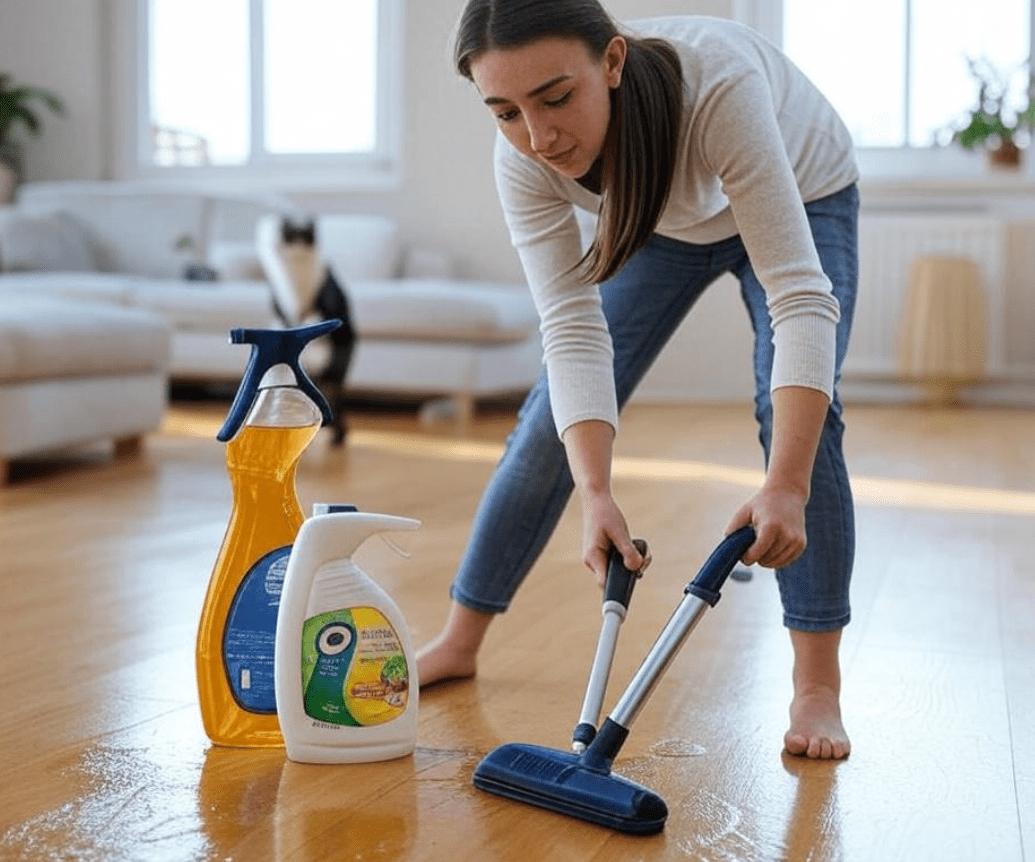
Cat Avoiding the Litter Box: When your cat refuses to use the designated litter box, check it for any hygiene, position or privacy problems. Test alternative litter items or put another litter box in a distant house zone.
Accidents Outside the Box: Use strong cleaning products to eliminate all traces of urine and stool from the damaged floor surfaces. Adjust your test to see if a covered litter box or alternative material helps them use the box correctly.
Multiple Cats and Conflict: Each cat in your home should have its own litter box plus one more to avoid conflicts between pets. Tensed cats over a single litter box cause unwanted mishaps when they compete for space.
Understanding Your Cat’s Preferences for Easier Litter Box Placement
You should study how your cat likes their litter box setup for better success with this habit. Each cat has its own particular needs when picking a spot for going to the bathroom.
Observe Behavior: Note how relaxed your cat appears around the litter box area to set the best placement. Take the box to another quieter space when your cat avoids using it.
Location Preferences: Cats have personal preferences when it comes to choosing either a private or exposed spot. Place the litter box at several spots to find out which spot your cat prefers the most.
Type of Litter: Cats often show clear preferences among different kinds of litter consisting of fine or coarse particles. Keep watching your cat interact with each litter and use the one they prefer.
Box Types: Some cats need a wide-open box to use easily whereas others benefit from the enclosed space of a covered box. Provide your cat both litter box types to figure out which one he wants to use.
Your cat will use the litter box properly if you identify their preferred placement location.
Conclusion

To prevent litter accidents you must understand your cat’s preferences and make a suitable place where they feel comfortable, easy to access, and private for doing their business. Having your
cat feel safe in its litter box space will make them use it regularly as intended. Your cat will feel comfortable using the litter box if you stay away from errors while keeping the area clean and choosing a spot that meets their needs.
Good litter box placement benefits your cat’s comfort as well as keeps your house neat. Using our tips will create a pleasant environment that prevents toilet mishaps for your cat.

